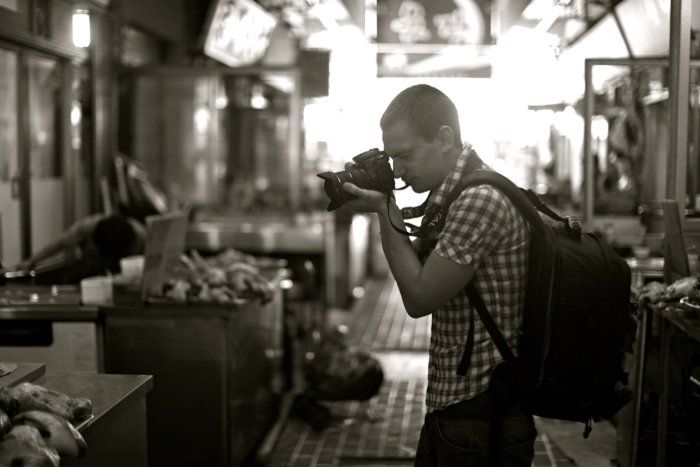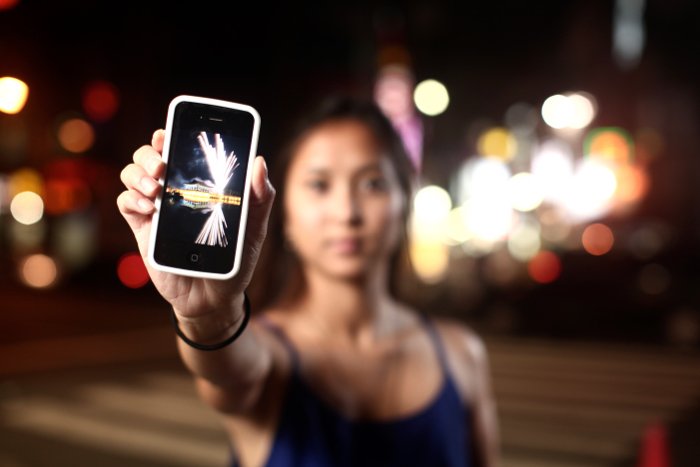When it comes to photography, there are a lot of different choices to make. One of the most important is deciding what type of camera to use. There are two main types: full frame vs micro 4/3. So which one is the best choice for you? Let’s take a look at the pros and cons of each one to help you decide.

Full Frame Vs Micro 4/3 Cameras: Comparing Different Types and Their Features
The launch of micro 4/3 camera systems heralded a new age in camera types. These smaller systems utilize mirrorless technology to cut down on size and weight. Leading the way with these cameras were Panasonic and Olympus.
Before reading on, it’s essential to understand the types of mirror and mirrorless cameras.
Crop sensor DSLR – These use the APS-C camera sensors. Crop sensor cameras are smaller, but not as small as a mirrorless camera. They have lenses designed for them, especially for wide-angle focal lengths.
Full frame DSLR – These cameras are often the professional photographers’ tool of choice. Full frame DSLR cameras are expensive and bulky, but they do deliver high performance. A crop sensor DSLR can feel like a feather compared to these cameras.
Micro 4/3 – This is a new breed of camera. The lenses are smaller than DSLR lenses but can offer as large apertures. You need to consider crop factor, which will affect things like bokeh, noise and focal length.
Full frame mirrorless – Many manufacturers, such as Sony, have designed mirrorless systems for full frame sensors. These systems have smaller camera bodies. The weight often gets transferred to the camera lens.
Today’s article is going to discuss the merits of micro 4/3 cameras vs DSLR. In this case, it will be the full frame DSLR. Keep in mind that the cost, weight and size of a crop sensor DSLR is a lot less than their full frame counterparts.

The Cost of Micro Four Thirds vs DSLR Cameras
The smaller size of the sensor and camera mean that the price of micro 4/3 cameras are lower. The fact that the necessary amount of material needed to produce the camera is less drives the price down.
So does the extra money you’ll spend on a full frame DSLR camera mean improved quality? The answer here is yes and no. The detail of this answer is that it depends on what kind of subjects you photograph.
If you’re interested in shooting the Milkyway, then the extra money you spend on a full frame DSLR or mirrorless camera will be worth it. Many types of photography will not stretch a camera as astrophotography does though. Micro 4/3 cameras make excellent images, and the rest is down to the photographer holding that camera.
Which Is Lighter? Micro 4/3 or DSLR?
In this category, there is no contest between the micro 4/3 system and a full frame camera. The micro 4/3 is so much lighter. This fact has several benefits to you as a photographer.
Comfort – If you’re out for a long day carrying a heavy camera is no fun. You’ll have backache at the end of the day.
Convenience – A bulky camera is something you might think twice about carrying with you. The best photographer always has their camera. You’re much like likely to bring it with you if it does not weigh you down.
Camera bag – A smaller camera bag is an option with a lighter camera. Another option is to bring more gear with you, and hence more choices for your photography. If your equipment is lighter in general, then packing extra things is an option.
Travel – Ever tried getting your full frame DSLR equipment under the cabin luggage weight for a plane? It’s unlikely you’ll achieve it. You’ll be bringing one lens with you, and won’t have the right lens for “that” photo.

The Benefits of a Smaller Camera
The size being smaller is, of course, related to the weight being less. There are other considerations to think about when it comes to the smaller camera setup. A smaller camera will mean you can pack everything into a smaller bag. You might be able to avoid using one of those enormous camera bags! You’ll be able to pack essential items into your backpack along with your camera, like water bottles or sun cream.
Micro Four Thirds vs DSLR Lenses
The cost, size and weight of the micro 4/3 camera body are all less than the DSLR counterpart. This lower price also applies to the lenses that go with it. It beats the full frame mirrorless camera lenses. You’ll be saving yourself hundreds of dollars per lens you buy.
An entire setup could cost around three or four thousand dollars less for a micro 4/3 system than the DSLR. The smaller size of the lens can mean you’re giving up something in aperture though, and the apertures listed can be misleading. You need to apply the crop factor to that aperture, which will affect things like depth of field.

Appearance
The appearance of a micro 4/3 camera is that of the classic cameras of yesteryear. The bulky DSLR camera is stripped down to a slim camera with more metallic furnishings. If you want your camera to look cool, then these are the cameras for you. They fit very well with the look a particular type of street photographer is looking to achieve.
There is a catch, though. To some, a professional photographer equals someone using a big DSLR. Think of sports or wedding photographers, few of them are using smaller cameras.
Key Differences of the Viewfinder
This feature is one of the key differences between a DSLR and the micro 4/3 cameras. It’s why micro 4/3 cameras look a little like the old viewfinder cameras. So let’s look at both camera types in turn.
DSLR – These cameras use a triangular mirror system, a little like a periscope on a submarine. When you look through the viewfinder, the image you see is actually what the sensor will see as the light comes through the lens. When you hit the shutter, the mirror will move upwards, exposing the sensor and allowing the exposure to take place. This mirror system is large, though, and that’s why dSLR’s are bulkier.
Micro 4/3 – These cameras use an electronic viewfinder system. This system allows you to look at the display at the back of the camera. You can do this on a DSLR by locking the mirror up. You can also look through a viewfinder, but this will now be the electronic display projected onto this viewfinder.

Micro Four Thirds vs DSLR for Focusing
There are two main methods that cameras use to get sharp auto-focus. This fundamental difference applies to micro four thirds vs dSLR’s. The DSLR uses a focus system called phase detect auto-focus. The micro 4/3 camera uses a combination of phase-detect and contrast-detect. What this means is the DSLR will achieve focus faster, so it’s better for event photography. The micro 4/3 camera is better for things like face detection and focus. So what are these two focus systems?
Phase detect – In this system, a sensor splits the image into two images. These two images come together on the camera sensor.
Contrast detect – In this system, the focus occurs on the camera sensor itself. The camera changes focus until the contrast from pixels that are next to each other is at its highest.
Does the Sensor Size Affect Image Quality?
The micro 4/3 sensor is much smaller than on a full frame camera, though not much smaller than the APS-C sensors. As discussed earlier, this means the camera can be smaller in size, and will then obviously weigh less.
This size comes at a cost, though. Smaller sensors typically produce more noise, especially when pushed to the extreme from something like a long exposure photo. That said technology is advancing, and cameras are better able to deal with noise now, making this less and less of an issue. One thing that won’t change is the crop factor that needs to be applied to a smaller sensor.

Consider the Crop Factor
The smaller sensor has an impact on the effective focal length and aperture of your lenses. Lenses made for this camera system can mitigate this. They have wider focal lengths to compensate for this crop factor.
So what is a crop factor? The focal length of a camera lens is measured against the old film cameras, with 35mm film. A full frame sensor is the equivalent of the 35mm film, so it has a crop factor of 1:1. That means a 50mm lens is 50mm for that sensor.
The smaller the sensor, though, the larger the crop factor for the lens. In the case of a micro 4/3 sensor, this crop factor is 2, which makes life easier when it comes to applying this to a lens. That means a 50mm lens with the aperture set to f4 will be performing like a 100mm lens with the aperture set to f8. This change in the aperture leads onto another effect, and that’s the depth of field.
Can I Produce Bokeh with a Micro 4/3 Depth of Field?
The aperture controls the depth of field of your camera. Larger apertures produce a shallower depth of field. There are some situations where shallow depth of field is desirable, for instance, portrait photography. But landscape photographers need a deeper depth of field, to maintain focus.
Those looking to produce bokeh will find this more of a challenge with a micro 4/3. Will you be able to produce bokeh like a full frame camera can with a 50mm lens at f1.2? The truth is, no. You won’t. Can you produce bokeh at all, though? Yes, you can. You’ll be working with a smaller aperture so, to produce bokeh, use a longer focal length. Get closer to your main subject and increase the distance to the background.

Which Camera Performs Better?
Does the larger, more expensive camera produce better photos? Yes, it does. Are the images so much better than it’s noticeable? No, they’re not, except for genres like sport or astrophotography.
Will you always take out the bulky full frame DSLR with you? That will be a choice for you to make, but it does become a grind if you have several heavy lenses with you. The micro 4/3 camera with several lenses is light, portable, and much more practical for you on the go.
The camera that’s most likely to be with you when you go out photographing is the micro 4/3. As a result, this will be the one that catches that moment of capture. The best camera, after-all is the one that you use.
Time to Get Out and Photograph!
Whichever system you decide on, they’ll both get you excellent results. Each has its merits, though the pendulum is swinging away from DSLR more and more as cameras advance.
Which system do you use? Do you have experience of both, and do you prefer one over the other? As always, we’d love to see your photos and read your comments in the comments section to this article.
